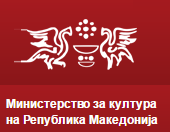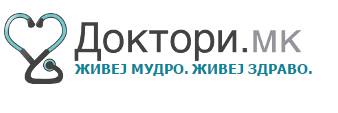JSER Policies
JSER Online
JSER Data
Frequency: quarterly
ISSN: 1409-6099 (Print)
ISSN: 1857-663X (Online)
Authors Info
- Read: 79147
|
ЕПИДЕМИОЛОШКИ КАРАКТЕРИСТИКИ НА АУТИЗМОТ ВО РЕПУБЛИКА МАКЕДОНИЈА
Владимир ТРАЈКОВСКИ 1
Филозофски факултет
Медицински факултет
Медицински факултет |
|
EPIDEMIOLOGICAL CHARACTERISTICS OF AUTISM IN REPUBLIC OF MACEDONIA
Vladimir TRAJKOVSKI 1
Faculty of Philosophy
Faculty of Medicine
Faculty of Medicine |
|
|
|
|
|
Вовед |
|
Introduction |
|
Аутизмот е тешко развојно нарушување, се јавува во најраното детство и ја загрозува неговата адаптација во општеството.
Цел на трудот е да покаже дел од демографските и епидемиолошките карактеристики на популацијата лица со аутизам регистрирани во Република Македонија. |
|
Autism is a very severe pervasive disorder diagnosed in the early childhood which made impossible the adaptation in the society.
The aim of this article is to show a part of demographic and epidemiological characteristics of the population with autism registered in Republic of Macedonia. |
|
|
||
|
Материјал и методи |
|
Material and methods |
|
Истражувањето претставува ретроспективна студија и е направено на подрачјето на Република Македонија, а опфати 50 лица со аутизам за кои постојат податоци во Заводот за ментално здравје во Скопје, Заводот за рехабилитација на слух, говор и глас во Скопје, Специјалниот завод во Демир Капија, ПОУ „Д-р Златан Сремац“ во Скопје, како и Центрите за социјална работа и Медицинските центри во РМ. Веродостојни податоци се добиени само за 39 лица и тие ја сочинуваат сржта на информациите за оваа состојба во Републикава. |
|
This research is a retrospective study, followed on the territory of the Republic of Macedonia, which covered 50 people with autism which data exists in the Department for Mental Health in Skopje, Institute for Rehabilitation of hearing, speech and voice in Skopje, Special Institution in Demir Kapija, Special School “Dr Zlatan Sremac” in Skopje, as well as Centers for social work and Medical centers in the Republic of Macedonia. Accurate data were obtained only for 39 people, and this group is a core informational cohort for the examined problem in the Republic. |
|
|
|
|
|
Резултати |
|
Results |
|
Во студијата за аутизмот во Македонија анализирани се 39 случаи со дијагностициран аутизам од кои 2 беа еднојајцеви близнаци од женски пол и еден двојајцев близнак од машки пол. Вкупно испитаници од машки пол имаше 28 (72%) кое споредено со 11 (28%) девојчиња даде коефициент на однос од 2.5 машки на едно женско лице со аутизам. |
|
In the study of autism in Macedonia 39 cases with diagnosed autism were analyzed, two of them were monozygotic female siblings and one person was dizygotic male sibling. Males were 28 (72%) and compared with 11 (28%) females give the relation rate of 2.5 males versus one female. |
|
|
|
|
|
Табела 1. Распоред на испитаниците според пол и возраст |
|
Table 1. Distribution of examined persons by sex and age |

|
Некои од демографските варијабли како местото на живеење, вероисповеста и националноста ги анализиравме според процентите на структура со кои истите би можеле да н¡ упатат на дел од можностите кои би требало да бидат ефект од обработката на податоци за овие лица со основна цел што поефикасно да се придонесе во нивната рехабилитација, социјална помош и морално-етичка поддршка на семејствата. |
|
Some demographical variables as the place of living, religion and nationality were analyzed with proportions. This can be useful for further examination, which will be effective for following rehabilitation, social welfare and ethical support for their families. |
|
|
|
|
|
Табела 2. Карактеристики на испитаниците според местото на живеење и вероисповедта |
|
Table 2. Characteristic of examined people by place of living and religion |
 |
|
Децата со аутизам се најчесто родени во брак (95%), кое се совпаѓа со фактот дека најголем дел од нив се посакувани (97%). Од претходните информации следува дека најмногу контакти при анкетирањето се направени токму со обата родители (37%), од кои се добиени податоци за карактеристиките на состојбата кај нивното дете. |
|
These children are born in married inhabitants in 95%, and there is a fact that they are in 97% attended babies. From this information we can tell that mostly (37%) the research have been done by direct contact and questioning both parents. They obviously give all the data for their child and described the real characteristics of its disease. |
|
|
|
|
|
Табела 3. Компликации во перинаталниот |
|
Table 3. Complications in the perinatal period |
 |
|
Во табела 3 се забележува дека во инкубатор престојувале само 19%. Општо земено компликации во перинаталниот период се регистрирани кај 30% од лицата со аутизам испитани во нашата серија. Компликациите не учествуваат значајно во настанокот на аутизмот (c2=2.78; df=1; p=0.09). |
|
Seven children (19%) who were in incubator are notified in table 3. Complications in perinatal period at a whole were registered in 30% of people with autism examined in our study, but this is not highly significant (Chi-square=2.78; DF=1; p=0.09). |
|
Табела 4. Вакцинација и реакција на вакцинацијата |
|
Table 4. Vaccination and reaction to vaccination |
 |
|
Дискусија |
|
Discussion |
|
Првата студија во Македонија се однесува на комплетна анализа на аутизмот и се покажа дека сознанијата што ги имаат Центрите за социјална работа и Медицинските центри, понекогаш се недоволни. Комплексноста во поставувањето на дијагноза, недоволна информираност на популацијата и немање званичен законски национален регистер за аутизам се дел од факторите кои допрва треба да се решаваат тимски. |
|
This is a first study with complete analysis of autism in the Republic of Macedonia, which has shown that in the Centers for social welfare and in the Medical centers, sometime the data for children with autism are inconvenient. The complex in diagnosis making procedures, insufficiency of information of the population, absence of a legislative registration and National register for autism, are part of tasks for a team who must work on this problem. |
|
Досега вака ниска преваленција од 0.7 на 10.000 жители објавуваат Trefferet и сор. во далечната 1970 година, што се должи на различните приоди во дефинирањето на аутизмот и методите за пронаоѓање на случаите (4). Honda и сор. во 1996 година објавуваат преваленција на Канеровиот аутизам од 21.1 на 10.000 жители во Јапонија, што е многу висока преваленција и не кореспондира со другите студии (5). Во други епидемиолошки студии во Англија, Шведска, Данска, Франција и САД преваленцијата на аутизмот изнесува 4-5 деца на 10.000 живородени (6, 7). Други автори (8, 9) заклучуваат дека преваленцијата е 10 на 10.000 деца, при што вклучуваат пошироки критериуми во дијагностицирањето. |
|
/10.000 is referred by Trefferet and coll. in the early 70-th, due to different approaches in definition of autism and methods for recognition of real cases (4). Honda and coll. in 1996 in Japan report the prevalence of Kaner's autism of 21.1 / 10.000, which is a very high prevalence and does not correspond with other studies (5). Other epidemiological studies made in England, Sweden, France and USA show that the prevalence rate of autism is 4-5 children in 10.000 newborn (6, 7). Other authors (8, 9) give a conclusion that the prevalence of 10 / 10.000 children can be obtained by including larger criteria for diagnosis. |
|
Аутизмот кај машките деца се презентира со повисок IQ и класични аутистични симптоми. Кај тешко ретардираните групи, женските деца со аутизам имаат потешки оштетувања на мозокот отколку машките. |
|
|
|
Ваквиот податок е дијаметрално спротивен на Pomeroy и сор. (6) кои ја поставуваат хипотезата дека децата со аутизам се раѓаат најчесто како првородени или многу подоцна родени (четврти по ред итн.). Слични резултати на нашата студија објавуваат Švel Ivo и сор. Кои наоѓаат дека најчесто се раѓаат како второродени деца (37.5%), а првородени 28.1% (10). Статистичката анализа не ги издвои второродените деца како ризик за појава на аутизам, односно редот на раѓањето во оваа студија нема никакво влијание во настанувањето на аутизмот. |
|
|
|
Тоа се покажа сигнификантно асоцирано со времетраењето на доењето преку анализа со тестот на Kruskal-Wallis (p<0.01). Во литературата не е најдена слична студија за да може да се споредат овие резултати. |
|
|
|
|
|
|
Заклучоци |
|
Conclusions |
Резултатите од оваа студија можат да се искористат како добра основа за понатамошни епидемиолошки истражувања, откривање на нови ризикофактори во настанувањето на аутизмот и во планирањето на превенцијата на овој тежок синдром. |
|
|
|
|
|
|
Citation:Trajkovski V, Vasilevska K, Ajdinski Lj, Spiroski M. Epidemiological Characteristics of Autism in Republic of Macedonia. J Spec Educ Rehab 2005; 6(3-4):25-39. |
||||
|
|
||||
|
Литература / References |
|
|
||
|
|
|
||
|
|
|||
|
|
|||
Share Us
Journal metrics
-
 SNIP 0.059
SNIP 0.059 -
 IPP 0.07
IPP 0.07 -
 SJR 0.13
SJR 0.13 -
 h5-index 7
h5-index 7 -
 Google-based impact factor: 0.68
Google-based impact factor: 0.68
10 Most Read Articles
- PARENTAL ACCEPTANCE / REJECTION AND EMOTIONAL INTELLIGENCE AMONG ADOLESCENTS WITH AND WITHOUT DELINQUENT BEHAVIOR
- RELATIONSHIP BETWEEN LIFE BUILDING SKILLS AND SOCIAL ADJUSTMENT OF STUDENTS WITH HEARING IMPAIRMENT: IMPLICATIONS FOR COUNSELING
- EXPERIENCES FROM THE EDUCATIONAL SYSTEM – NARRATIVES OF PARENTS WITH CHILDREN WITH DISABILITIES IN CROATIA
- INOVATIONS IN THERAPY OF AUTISM
- AUTISM AND TUBEROUS SCLEROSIS
- THE DURATION AND PHASES OF QUALITATIVE RESEARCH
- REHABILITATION OF PERSONS WITH CEREBRAL PALSY
- DISORDERED ATTENTION AS NEUROPSYCHOLOGICAL COGNITIVE DISFUNCTION
- HYPERACTIVE CHILD`S DISTURBED ATTENTION AS THE MOST COMMON CAUSE FOR LIGHT FORMS OF MENTAL DEFICIENCY
- DIAGNOSTIC AND TREATMENT OPTIONS IN AUTISTIC SPECTRUM DISORDERS – AN OVERVIEW
















